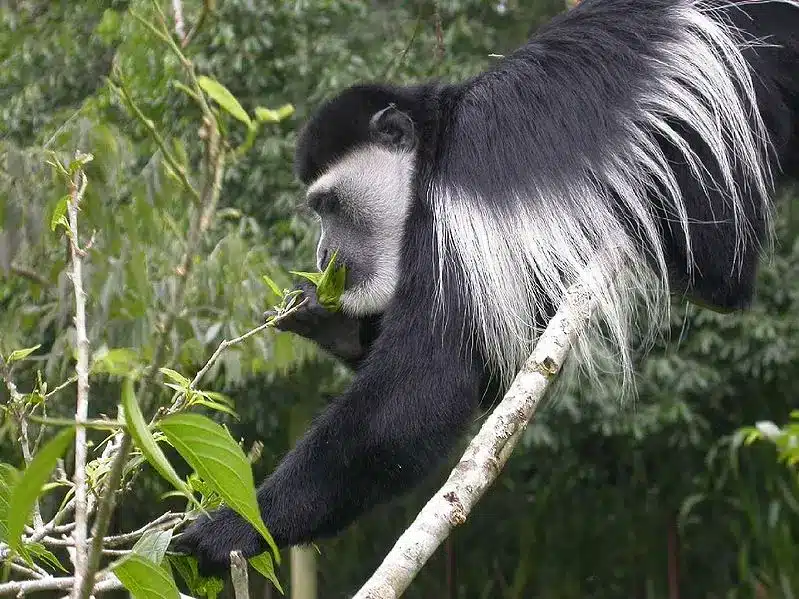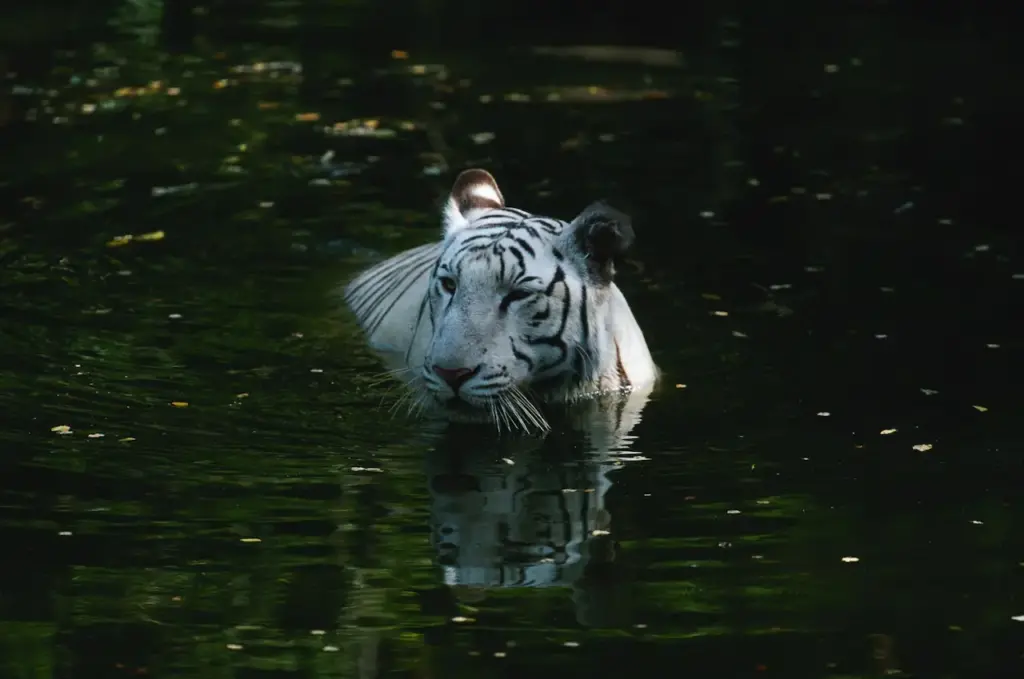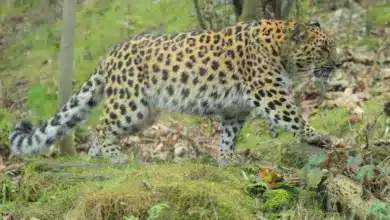A complete list of jungle animals would take you weeks and weeks to read, since there are millions of animals living in the world’s jungles. About half of all the animal species on earth—mammals, birds, insects, amphibians and reptiles—would be on that list of jungle animals.
In addition, the world contains many different jungles or rain forests, and the list of jungle animals would be different for each jungle.
However, if we want to, we can make a short list of some of the most interesting jungle animals in each of the rain forests around the planet. We can have a list of jungle animals for each jungle that includes a top predator or two, one or two of the largest animals in that jungle, some primates, one or more reptiles, and some birds.

Here Are Our Lists Of Jungle Animals
List Of Jungle Animals In The Amazon
- Top Predators: Jaguars, Cougars, Ocelots
- Largest Animal: The Tapir
- Rodent: Capybara (The World’s Largest Rodent!)
- Reptiles: Anaconda, Bushmaster (poisonous snake) and Caimans (several species; the largest is the black caiman)
- Amphibians: Poison Dart Frogs
- Birds: Harpy Eagle, Macaws (including the scarlet macaw and the hyacinth macaw)
- Primates: Spider monkeys, howler monkeys, capuchin monkeys, squirrel monkeys
- Fish: Piranha
- Insect: Leaf-Cutter Ant

List Of Jungle Animals In Africa
Top Predator: The Leopard
Large Animals: The Jungle Elephant, The Okapi
Reptiles: Rock Python, Nile Crocodile, Mambas (several species of poisonous snakes)
Birds: Gray Parrot, Crowned Eagle
Primates: Chimpanzees, Bonobos, Gorillas, Mandrills, Baboons, Colobus Monkeys, Bush Babies
Fish: Tiger Fish
Insects: Termite
All About Leopards: The Spotted Stealthy Hunters!
Meet the Amazing Leopard!
Leopards are super cool big cats famous for their amazing spots and sneaky hunting skills! Imagine a leopard quietly waiting in a tree or creeping silently through tall grass, ready to jump out and surprise its dinner. Being quiet and sneaky is what leopards do best.
Leopard Family Fun!
When a mother leopard is ready to have her babies, she finds a safe cave or hidden spot. Usually, two or three cubs are born. Baby leopards are tiny, their eyes are closed, and they can’t walk yet. Mum stays close, protecting them and keeping them safe.
After a few months, these cubs start following their mum around. They learn how to hunt by playing games like stalking, pouncing, and chasing each other—just like kittens you might see at home! By the time they are about two years old, they’re ready to live on their own.
Leopards usually live alone, except when a mother is with her cubs. They communicate by making rough barking sounds and using special white spots on their tails and ears to find each other in tall grass.
Super Spots and Cool Colours
Did you know that leopards have special spots called rosettes? These spots look like flowers! Leopards living in dry, open places usually have lighter fur, while those living in dark rainforests can be very dark—even almost black! Their special patterns help them hide and stay safe.
Leopard Habitats and What They Eat
Leopards can live almost anywhere! You can find them in deserts, mountains, forests, and grasslands. They’re also good swimmers, unlike most cats, and they even like water!
These strong cats eat many kinds of meat, including monkeys, snakes, birds, and antelopes. Leopards hunt mostly at night, and they are excellent climbers. They can carry their food up into trees to keep it away from lions or hyenas, and sometimes they hide food that is even heavier than they are!
Leopards are Amazing Athletes!
Leopards are fantastic jumpers—they can leap forward almost 6 metres (20 feet) and jump straight up about 3 metres (10 feet). They can run very fast for short distances, reaching speeds of about 58 kilometres per hour (36 miles per hour).
Staying Safe from Other Animals
Even though leopards are great hunters, they have to watch out for bigger animals like lions, hyenas, and tigers. Leopards stay safe by resting and hiding in trees or hunting at different times than other big predators.
Helping Leopards Stay Safe
Sadly, some leopards are in trouble because people hunt them for their beautiful fur or because their homes are being destroyed. Special groups and wildlife parks around the world are working hard to protect leopards and make sure they have safe places to live.
One special type, the Amur leopard, is very close to disappearing. But don’t worry—scientists and animal lovers are working together to keep these beautiful animals safe. They use special cameras in forests to watch and count the leopards, helping them learn more and keep them protected.
Leopards Need Our Help!
Everyone can help leopards by learning about them and sharing their stories. Protecting their homes, stopping illegal hunting, and teaching others about these awesome cats will help ensure leopards have a bright future. With everyone’s help, leopards will have plenty to “stalk” about for many years to come!
List of Jungle Animals In Asia
Top Predators: The Tiger, The Leopard
Bears: Sun Bear, Sloth Bear
Bat: Flying Fox (Fruit-Eating Bat)
Largest Animals: Sumatran Rhinoceros, Elephant, Water Buffalo
Birds: Cockatoo, Black Eagle
Reptiles: Saltwater Crocodile, Burmese Python, Cobra (several species)
Primates: Orangutan, Gibbons, Macaque Monkeys, Langur Monkeys, Tarsiers
Fish: Betta (Siamese Fighting Fish)
Jungle animals occupy an important position in human culture. Some animals look special, some animals have different meanings, symbolizing various good qualities and enriching the connotation of human culture.
Are you also interested in the appearance and connotation of these jungle animals? Custom pins are a wonderful way to express our love for them and creative animal designs. You can add your favorite jungle animal pictures to your ideas and creativity. They can be presented on pins in various ways, which is very good for collection and decoration.
In this case, choose your favorite animal immediately, think about the design you want, and customize your unique pins immediately.
Find out more about tropical rainforest animals.
